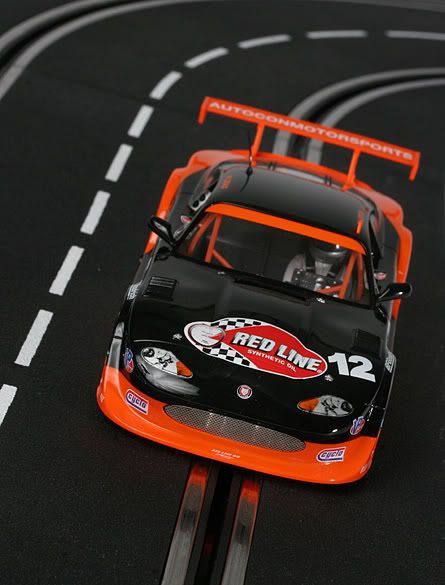
The latest Scalextric Jaguar XKRS offers an excellent model and a great running slot car but would you expect anything less from Scalex? A well contoured black and coral body does have more detail than I expected.
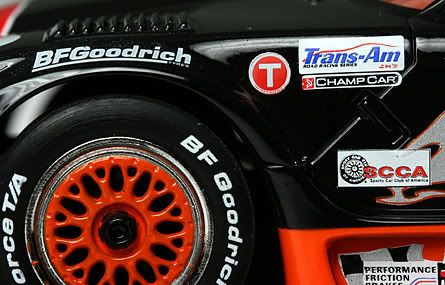
There's a really nice photo etched grille. And this car might be the winner in the "who can make the smallest tampo printing" contest. There are more unreadably small logos on this car than you can imagine. The Jaguar logo on the nose is so finely done it's amazing.
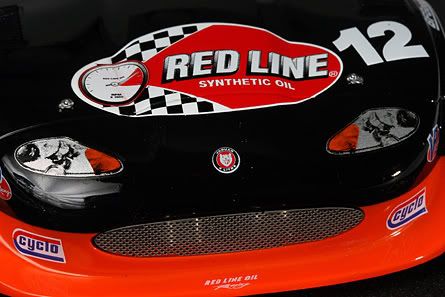
Another exterior details that really catch the eye is what I assume to be the top of the fuel cell in the rear window.
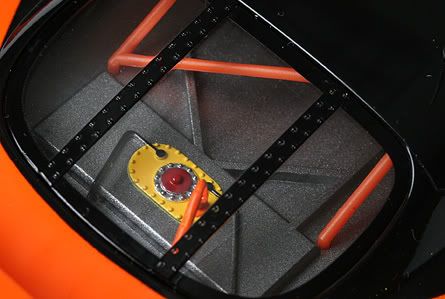
In the not so distant past you'd hear lots of talk about this type of detail from other companies (like Fly for example) but not as much talk about that detail being present on Scalextric cars. But if you take a look in the driver side window you'll see, that is you will if you've got great vision, a tach that's got the smallest printing I've ever seen.
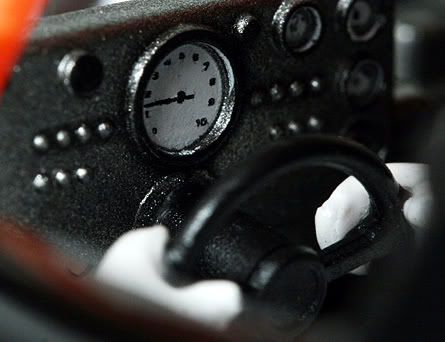
On first glance I'd bet no one would guess there are numbers, 1-10 on the white face. The first time I looked I thought there was nothing more there than specs of hash marks...but no, numbers actual numbers less than a millimeter high!
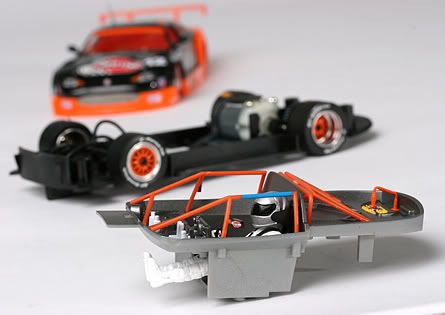
One bit of design that's got to be noted is the pop out interior. It's a full interior and is held in place by posts in front and at the rear of the interior tray. it's a great design and allows kit bashers or fiddlers to easily remove and then put the interior back in without damaging what is a great model.
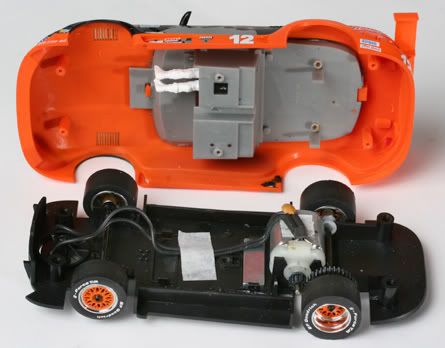
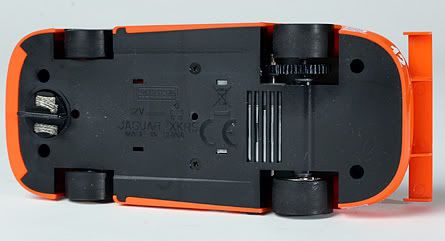
The car does not have a motor pod like some other recent Scalextric releases but that doesn't take away from the performance of this car. The running gear doesn't offer any surprises when you pop the body off the car. A standard S-Can which during the on going Slot Car News motor testing turns about 20-23k rpm is mounted as a sidewinder. But then most of the time "no surprises" is probably a good thing, eh?
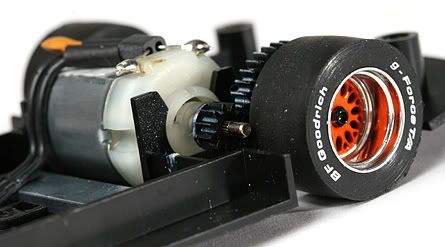
During testing that legendary out-of-the-box performance was evident. The tires and wheels were round and spun well on the axles which are held in by plastic bearings. I'd like to see Scalex make brass bearings standard on every car, would it add much to the costs? Who knows, but I think that this is one area that might be at least a nice "window dressing" type of improvement to give nit-picking reviewers something to talk about.
This slot car is really a great buy and a good example of things that are the best qualities that slot car companies should have. Excellent detail. A well designed drivetrain that's quiet and mechanically sound. And a car that will appeal to the newbie driver who needs an easy to drive car, and the experienced slotter who appreciates a car that DOESN'T need anything to be a competitive car in a modern GT-type class.
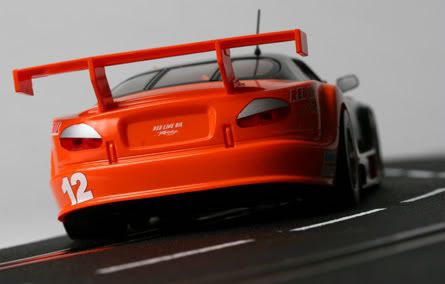
Thanks to Fantasy World Hobbies for the car for review.
Dave Kennedy
Publisher, Slot Car News
Pete, I guess I was thinking of the Maser and Lister...
ReplyDeleteThe car is stable and easy to drive without magnets. This car would seem like a good candidate for SuperTires (provided one's fit). This would be a great non-magnet car since it's pretty wide and doesn't feel topheavy when you drive it.
Much of the driving was done on Rob's wood track for this car. The tires stuck ok but not as well as you'd like if you were going to race it against modified cars with replaced tires.
All the Scalex and Fly motors tested seem to fall in an rpm range from 20-23k or so. There seems to be a fairly wide range of rpm's. Reasons for this would be only speculation...
DaveK
Pete, the recent Scalextric standard motors seem to be about 22.5k, no load RPM with an accurate tach, while the ones from last year and the year before clock about 20-21k. Performance on the track is not affected, though. That is, the torque of the motors with the higher revs may be lower than the torque of the motors with the lower revs, so the amount of power, and speed of the cars, remains the same . . . maybe.
ReplyDelete